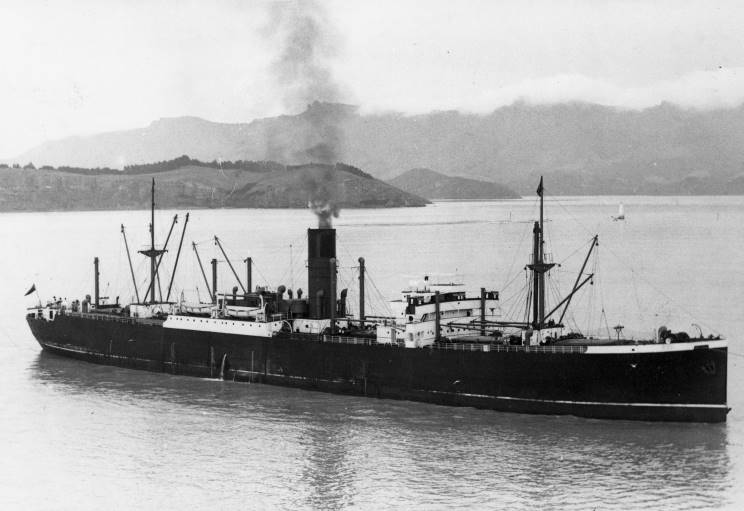|
The Limerick was a Scottish built refrigerated freighter of 8,724 tons launched on Mar. 12, 1925. The 460' long vessel was built for the Union Steamship Company of New Zealand and registered in London. Like may such ships the Second World War would spell doom for her. On April 26, 1943 the ship was in convoy GP-48 en route from Sydney to Brisbane, she was in company with four other merchantmen and two escorts. The convoy assembled and departed Sydney Heads on Apr. 24, but Limerick was having a unique problem. The convoy could not keep pace with Limerick because of some engine defect which kept her from sailing slower than 10 knots. Due to this she occasionally had to zigzag to remain with the slower ships in the convoy. At 0105 one of the escorts, HMAS Ballarat J-184, reported seeing a white rocket then a heavy explosion coming from Limerick, the ship had been torpedoed. One torpedo hit her on the port side amidships which seems to have caused a panic among the crew as most of them jumped overboard before the master, F. L. G. Jaunay, could even get up on deck and give any orders. The torpedo was fired by Lt. Commander Hajime Nakagawa from I-177, who made no further attack apparently wanting to avoid being attacked by the escorts. Both Ballarat and HMAS Colac J-242 responded to the sinking ship, and both made an A/S search, but found no target (Colac dropped two depth charges, but these were only to keep the submarine down and prevent further attack, however they were nowhere near I-177). Ballarat continued with the convoy and Colac conducted the rescue operation. The search for survivors was difficult due to the darkness, nevertheless throughout the night and into mid morning Colac picked up men from the water who had been drifting all night. Limerick was still afloat and afire when daylight broke, Lt. Cdr. Spence B. Komoll, RANR (CO of Colac) attempted to pass a line to Limerick with the intention to tow her to port, however this could not be accomplished and Limerick sank at 0603, the master being the last man off the ship. The search for survivors continued until 0930, by which time seventy men had been taken aboard Colac, two men, probably lost when the torpedo hit, were not recovered. HMAS Colac arrived at Howard Smith's wharf in Brisbane the following day and landed the survivors. Lt. Cdr. Nakagawa made good his escape and less than a month later he sank the hospital ship Centaur killing over 250 on board. He survived the war and was convicted of war crimes for shooting survivors in the water (he murdered men from British Chivalry, Sutlej and the AMC HMS Ascot, but did not shoot survivors of Centaur), and was also the CO of I-60 when on Feb. 2, 1939 during a mock torpedo exercise ran down I-63 and sank her killing 81 men. He spent four years in prison after the war and died in the mid 1980s. Limerick laid on the ocean floor off Cape Byron, Australia undisturbed until some time in 2011 when the wreck was located. It was not positively identified until 2012 and on Apr. 24, 2013 she was declared a protected wreck and war grave. The Union Steamship company lost another ship named Limerick on May 28, 1917 when she was sunk by SMS U-86, in this case eight men were lost. |
© 2013 Michael W. Pocock MaritimeQuest.com |
 |
Limerick, date and location unknown. |
Roll of Honour |
 |
In memory of those who lost their lives in Limerick "As long as we embrace them in our memory, their spirit will always be with us" |
Name |
Rate |
||
Rush, William F. |
4th Engineer Officer |
New Zealand Merchant Navy |
|
Willmott, John E. |
3rd Officer |
Australian Merchant Navy |
To submit a photo, biographical information or correction please email the webmaster. |
2005 Daily Event |
2007 Daily Event |
|
2010 Daily Event |
||
2011 Daily Event |
||